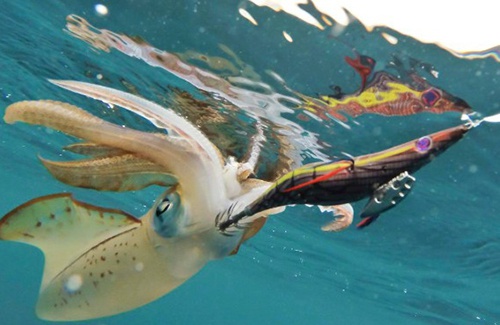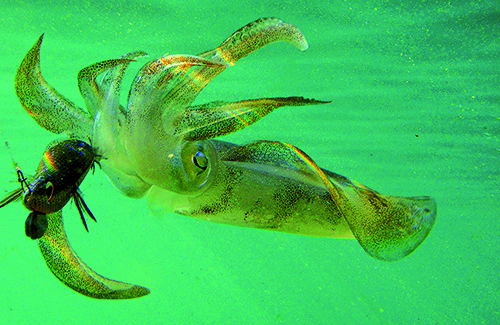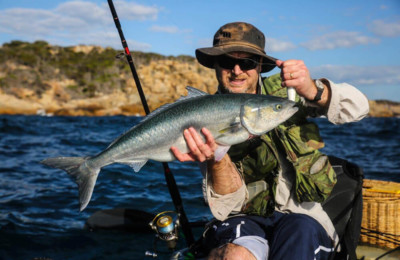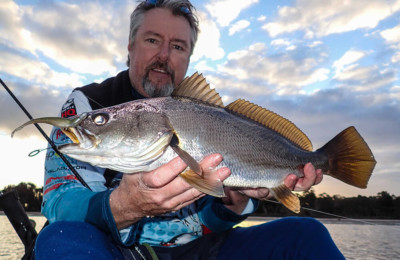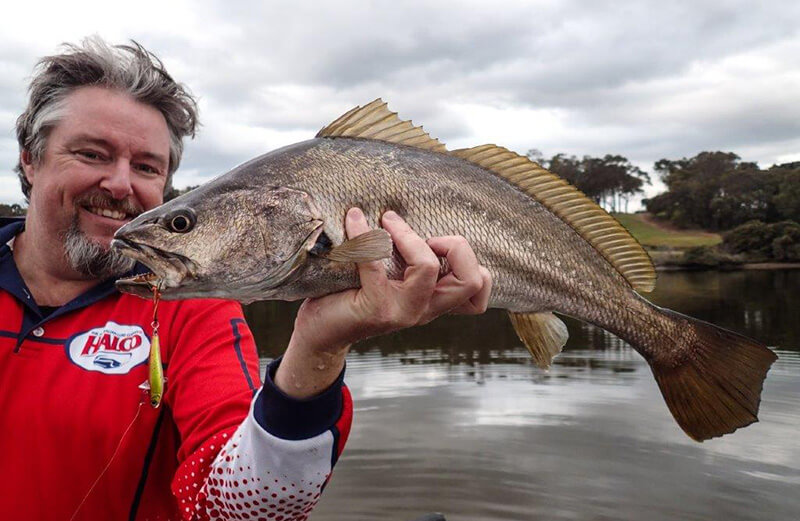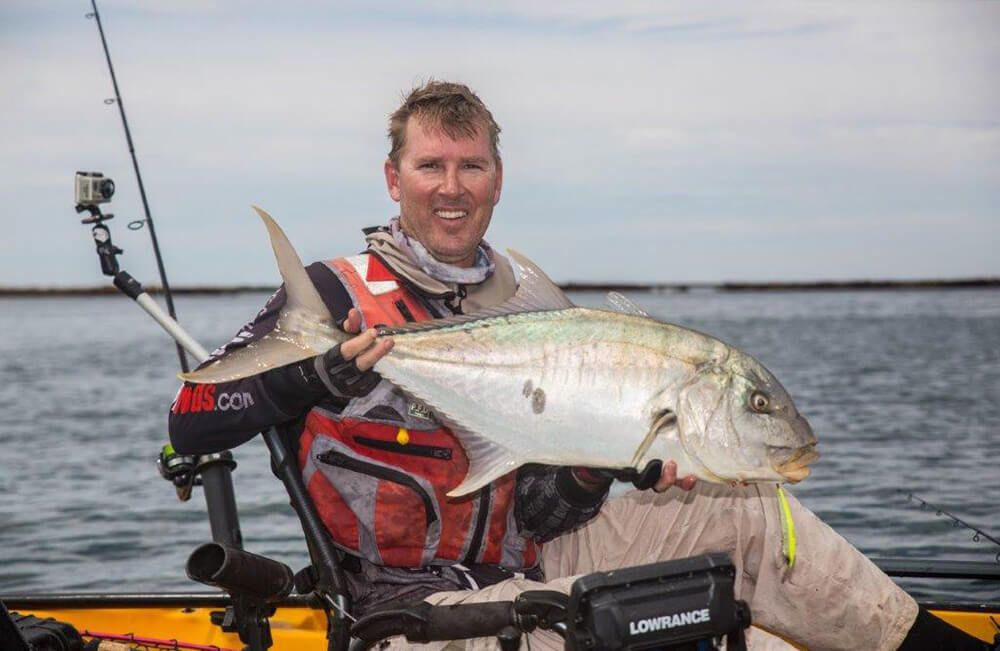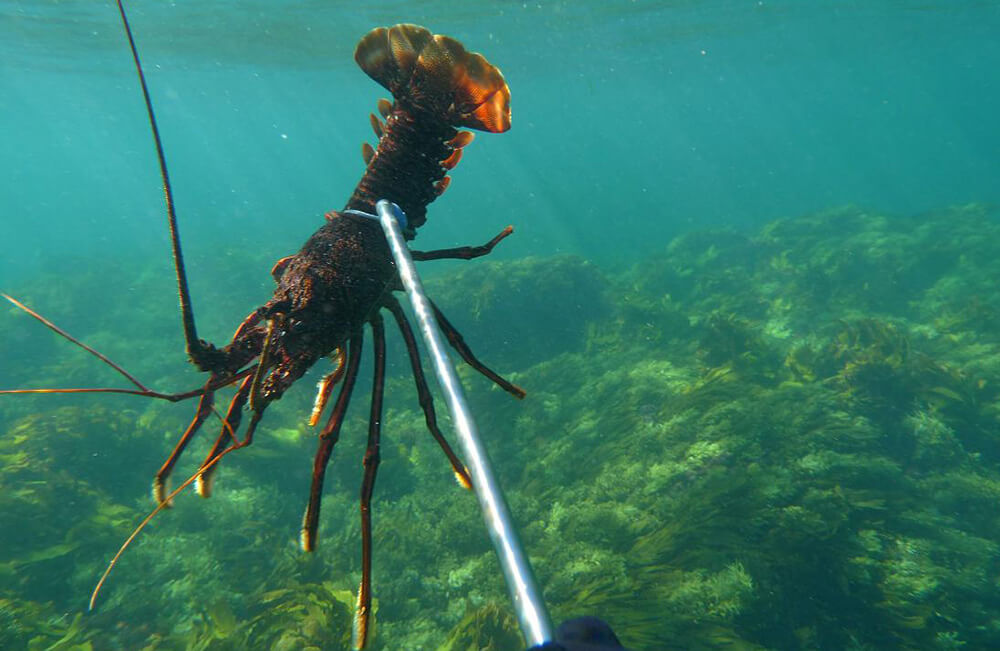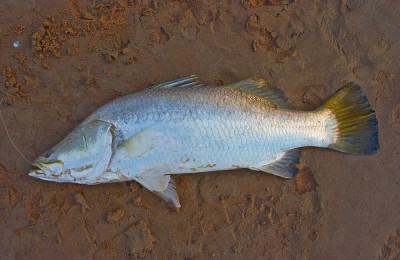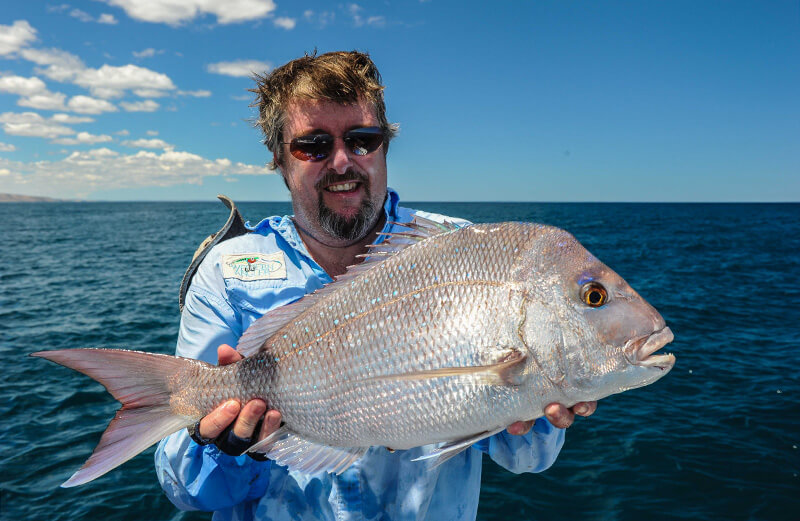It is always an interesting sight amongst a group of anglers the moment someone spots a squid, with the resulting scramble by just about everyone to find a squid jig in their tackle boxes and be the first to have a go at it. Love them or hate them, squid are high on the list of desirable creatures to catch no matter where you are fishing in this state.
For most people, squid are a much welcomed by-catch; something you didn’t really venture out to target but happened to pick up whilst chasing other species. It seems to be the domain of the small boat angler who actively ventures out to catch a feed of squid, but for those of us who fish from the shore, these creatures rarely take up much of our time.
Sure it is far more effective to drift across shallow sand and weed beds with a few squid jigs in tow, and when the conditions are right a good catch is almost a certainty. For a few people who have worked out how to target these creatures from the shore, a feed is never far away, providing you follow a few simple rules.
I always carry a squid jig or two in my tackle bag, especially if I’m fishing from jetties or rock locations where squid and cuttlefish are often found. From beaches these creatures are rarely seen, but I have seen them and caught them with the sand under my toes at times so always be prepared.
So where do you start if you want to bag a feed of squid from the shore?
Well the first thing to do is get the right gear, and that means a selection of squid jigs in different sizes and colours. Next all you will need is a fishing rod and in some places just a hand line if you wish. Now I have taken squid from the shore in both the north-west and south-west of the state, however most of my catches have come locally close to Perth.
The first trick to catching squid from the shore at any location is to assume that they are there, even if you haven’t spotted any or you think they will not be around. I have had squid magically appear out of nowhere and catch me off guard too many times to remember, sending me scurrying back to my tackle bag for the jig like a man possessed.
So rule number one, bringing a squid jig with you whenever you fish is good practice as trying to catch one with fishing hooks is a frustrating and fruitless exercise. I have at times foul hooked a squid that was trying to eat a bait or lure I was using, but a general rule is that the best way to hook a squid is with a squid jig. All those tiny sharp points on the squid jig make sure that the cunning creature is well and truly spiked the moment it wraps its legs around the jig. Often they will hang onto a bait all the way to the surface only to let go at the last second, usually spooking in the process.
If you get a squid following a bait or hanging onto it, then get a squid jig in the water as soon as possible. Avoid trying to lift the squid clear of the surface until the jig is nearby and the squid has spotted it. Usually they will let go and attack the squid jig immediately, resulting in a burst of ink and fresh squid rings for dinner!
LOCATIONS
Jetties
These structures are without doubt the number one location to target land based squid from, and a stroll along just about every jetty that juts out into the ocean will be stained with squid ink from numerous captures. Some locations will produce better than others. I like jetties that have broken sand and seagrass nearby, as this is prime squid country. Jetties are easy to fish from and both rod and handline can be used to flick a squid jig around to see if there are any takers. Time of day is often important, as late afternoon and into the early evening is usually the prime hunting time for squid, but getting a spot early to avoid missing out usually sees me down at the local jetties a bit earlier in the day.
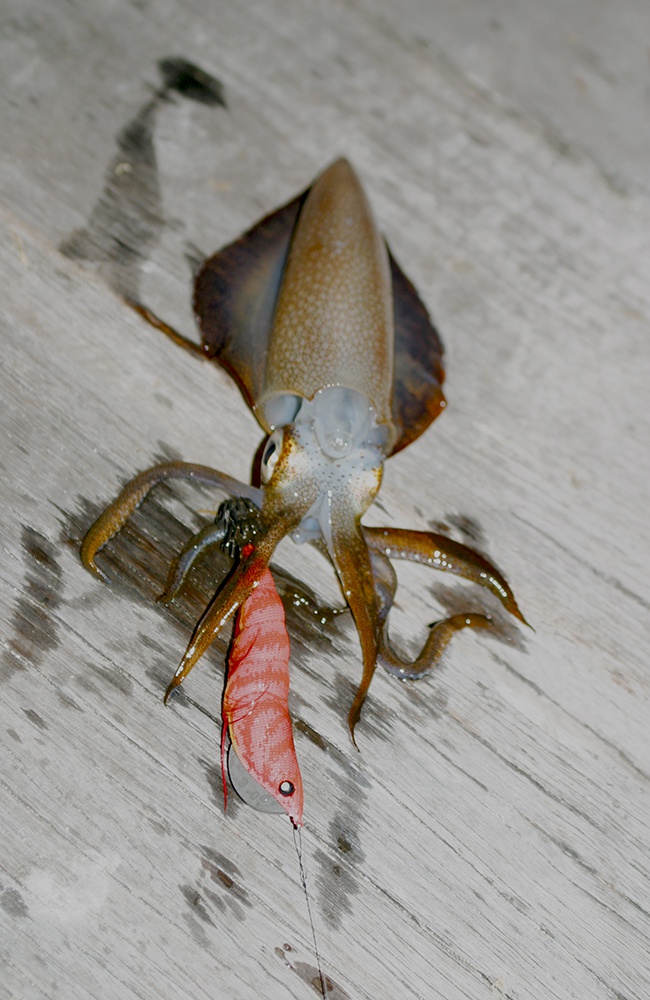 Squid can be caught during the middle of a bright sunny day, especially if the jig is left to sink down near the pylons and attract the attention of any squid hiding in the shadows of the jetty. Up north I have seen small schools of squid move with the tide past jetties, and if you are quick enough you can snare several before they move on. Learmonth Jetty near Exmouth is one such location where you should always carry a squid jig, as is the long jetty at Busselton. Both these locations will produce squid during the day, however as mentioned before, just on dark is prime time.
Squid can be caught during the middle of a bright sunny day, especially if the jig is left to sink down near the pylons and attract the attention of any squid hiding in the shadows of the jetty. Up north I have seen small schools of squid move with the tide past jetties, and if you are quick enough you can snare several before they move on. Learmonth Jetty near Exmouth is one such location where you should always carry a squid jig, as is the long jetty at Busselton. Both these locations will produce squid during the day, however as mentioned before, just on dark is prime time.
Another popular method used to catch squid, especially the bigger, more weary individuals is to carry one of the spike squid jigs, the metal ones used to skewer a fish on as bait. Suspend one of these jigs with a fresh, whole sand whiting, mulie or yellowtail as bait about a meter under a small float, usually a party balloon that is half filled with water and blown up to the size of a baseball.
This technique is popular from the Busselton Jetty and the size of some of the squid I have seen taken this way proves it is a very effective method. All you do is cast the jig and float/balloon out about ten to fifteen meters from the jetty, sit back and wait. The moment you see it bobbing about or trying to get pulled under the surface you can be sure that a squid has a good grip on it.
Once the squid is hooked, a gentle and steady retrieve to bring it in and out of the water is the best way to avoid tearing the legs that are spiked on the jig. Just be ready for the ink and in most cases you can swing the squid back and onto the jetty a short distance away so that it can blast its artwork on the planks. Just make sure there are no close bystanders watching or they might end up wearing the ink.
It is a simple matter of just walking over to the squid and grabbing it behind the eyes to restrain it, then remove the jig and put the prize into an esky or bucket. An ice slurry is the best thing for slowing a squid down and keeping it in top eating condition.
The prawn style jigs that are cheap to buy from any tackle shop are also top producers from jetties, accounting for probably 99% of all squid caught. There are a few better quality models out there that really stand out but they cost a fair bit more so most people shy away from them. The more expensive Japanese squid jigs come under this category. Although they have higher price tags, once you use them you’ll find they do catch more squid and you won’t go back to the cheaper ones.
Rocks
Be it a man made rock groyne or a natural rock location you are fishing from make sure you have a squid jig with you as these places nearly always have squid living in or around them. Try to avoid fishing the deeper water around rocks, as your jig will often sink out of sight and get snagged down deep. If you can see the bottom and keep an eye on your jig you will not lose it and probably catch more squid in the process.
A fishing rod is the best weapon to use to cast your squid jig out and away from the rocks.It is then just a simple matter of slowly winding it back with a few short kicks to give it action. Any squid in the area will usually have a go at it or follow it back to the rocks so you can try and tempt it. From the deeper rock locations on the south coast you can also put out a whole fish on a spike jig under a float/balloon if you wish but generally this can only be done in the calmest of conditions. Suspending a prawn type squid jig under a float also works exceptionally well at times.
As mentioned before, the late afternoon or evening is prime squid time, however extreme caution is needed on any rocks when fishing, and not being able to see the squid jig in the water makes it a very difficult exercise indeed. Big cuttlefish, a close relative of the squid are also a good possibility from rock locations, and like squid they make fine eating. They will also respond to the same methods a squid will, but they have a never ending supply of very black ink, and they are prepared to use it, so you have been warned!
Beaches
Now I’m not talking about a surf beach, with rolling breakers and plenty of white water. Squid will almost never be found in such a stirred up, sandy environment, however there are plenty of sheltered beach locations that have reef and weed beds close to shore, and it is here that you will find squid. Most of these locations are overlooked by many people, but a stroll along the sheltered beaches late in the afternoon with a fishing rod and squid jig is often well worth the effort. Try flicking into any reef hole near the shore or over any weed beds that are within casting range and working your jig back.
But a word of warning, beach sand and squid just don’t mix, and trying to scrub, wash and scrape tiny bits of sand from your catch will send you mad. If you hook a squid from a beach location then keep it out of the sand at all costs otherwise you will have that horrible sandy crunch between your teeth when you sit down to a feed later on. When I have hooked squid from sandy locations I always make sure they are dropped straight into an esky or bucket before trying to remove the jig.
Although I don’t actively target squid from beach locations, the fact that they rarely get hit by anglers usually means that there is a good chance of catching a feed. It is usually when I am fishing for other species that I spot squid in the water and then go scurrying for the squid jig.
Estuaries
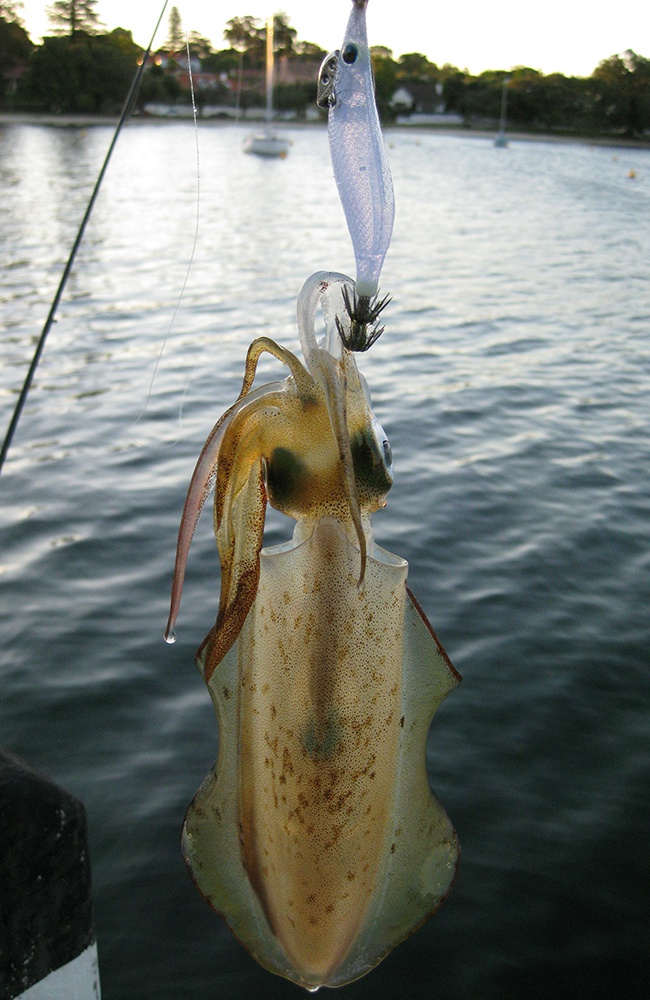 This has been a real eye opener for me over the last few years, especially with the Swan River during the warmer months. The amount of squid that are actually in the river is astounding, and I have returned home with a good feed from several jetty locations in the lower reaches. I was even caught off guard one afternoon in East Fremantle as a massive cuttlefish cruised past me whilst I was fishing for flathead, so once again, be sure to pack a squid jig everywhere you go.
This has been a real eye opener for me over the last few years, especially with the Swan River during the warmer months. The amount of squid that are actually in the river is astounding, and I have returned home with a good feed from several jetty locations in the lower reaches. I was even caught off guard one afternoon in East Fremantle as a massive cuttlefish cruised past me whilst I was fishing for flathead, so once again, be sure to pack a squid jig everywhere you go.
Other estuaries are also worth flicking a squid jig around in, as not too many people do it and these creatures can and do turn up in locations you’d never expect. My best catch out of the river was eleven big squid between a mate and myself from the shallows at Claremont. We probably saw twice that many on that day so I’m confident that the population of squid in the Swan River is very healthy.
The lower reaches are probably your best bet. Look for weed beds, rocks or jetties as these are where the squid will be hiding. As before, you will usually do better late in the afternoon or at night. When you think of the huge number of baitfish and prawns that thrive in estuaries then it makes sense that squid will follow, especially in the salty lower reaches.
I do admit that you get some funny looks from other anglers when you are flicking a squid jig around from a jetty in the Swan, however when you haul in a squid they are often totally amazed. If you suspect that there are squid about just check out a few jetties to see if there are any ink stains from other anglers in the know. Or better still put in a bit of an effort with a jig and see what you turn up.
Shore based squid fishing is not for everyone, but when perfected you can bring home numerous feeds of these tasty creatures without ever having to step on a boat. I haven’t mentioned using squid for bait, as freshly caught squid are just too good on the plate in my opinion, so using one for bait is just not an option for me. The other advantage of shore based squid fishing is that you can do it all year round if you like, although some locations will be un-fishable during winter storms, especially the rock locations. As for jetties, some of my most memorable nights during Winter have been due to the fact that I brought home a feed of squid. Just stick to the bag limit and please look after the ones you catch by putting them in an esky with ice. You can find out more about caring for you catch in our How to Catch Squid guide.
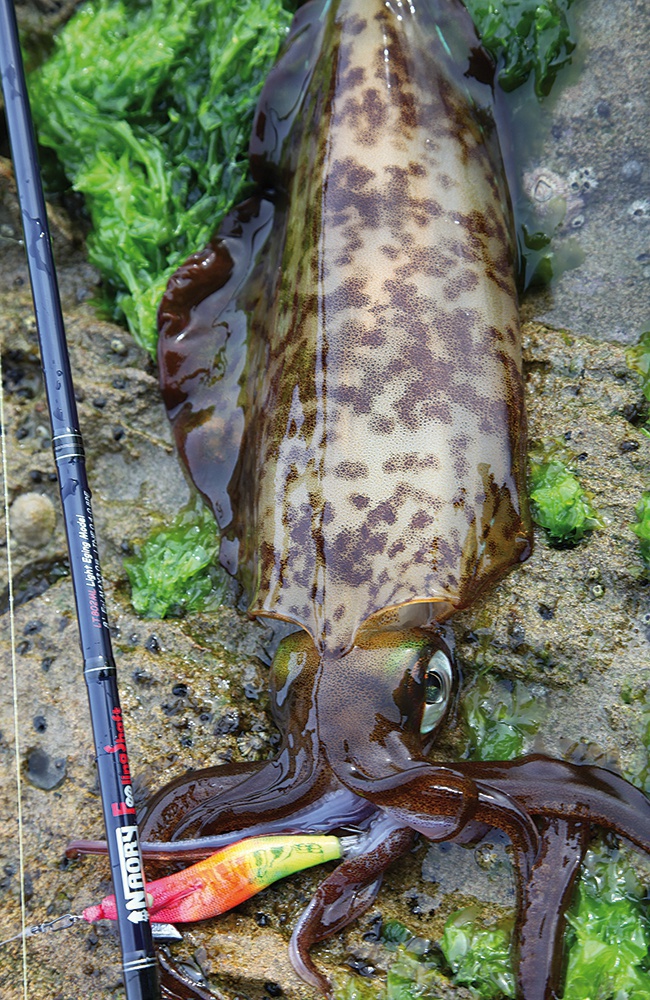
Squidding Tips
- Jetties with lighting will often attract squid and can be great places for targeting squid at night.
- Always endeavour to look after your catch by keeping it on ice.
- Inspect jetties and rock platforms for ink which indicates it is a worthwhile place to target squid.
- If you are fishing off rocks always wear a life jacket.
- When using a rod and reel for catching squid, adjust the drag so that it is quite loose, this will prevent losing squid from ripping off tentacles.
- Whenever you catch a squid look carefully behind the squid you have caught as many times they will come in with friends.
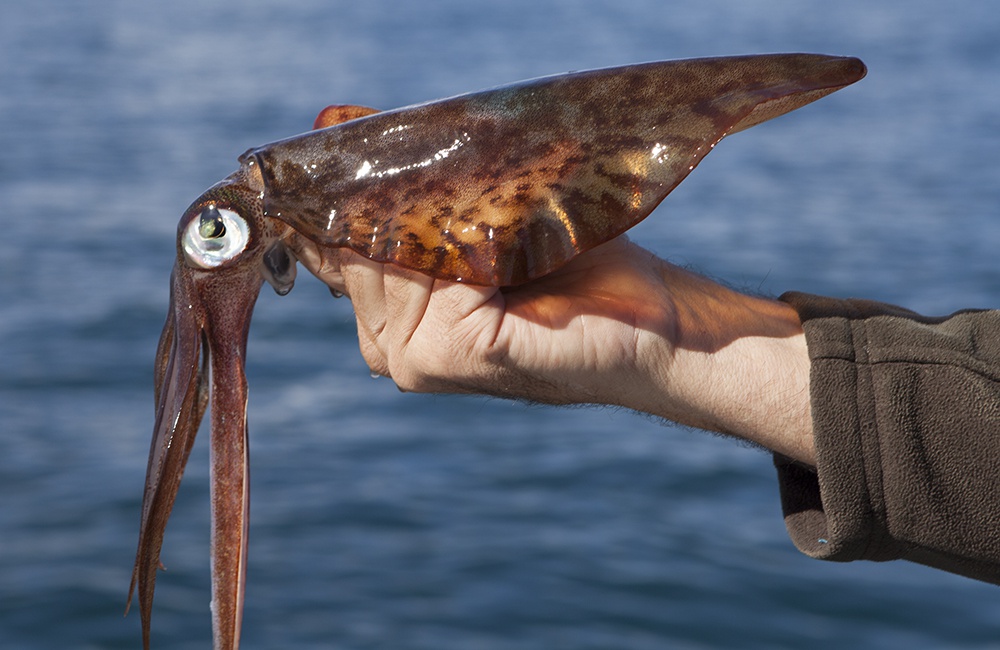
How to Catch Squid
Want to know which squid jig colour works best in low light or how to make sure you get tender squid every time?
Learn all this and more in our How to Catch Squid guide.

Rock Fishing Safety
Fishing from the rocks is dangerous. I Love Fishing recommends anglers fish from the beach or a jetty instead. If you must fish from the rocks, find out how to stay safe in our Rock Fishing Safety article.
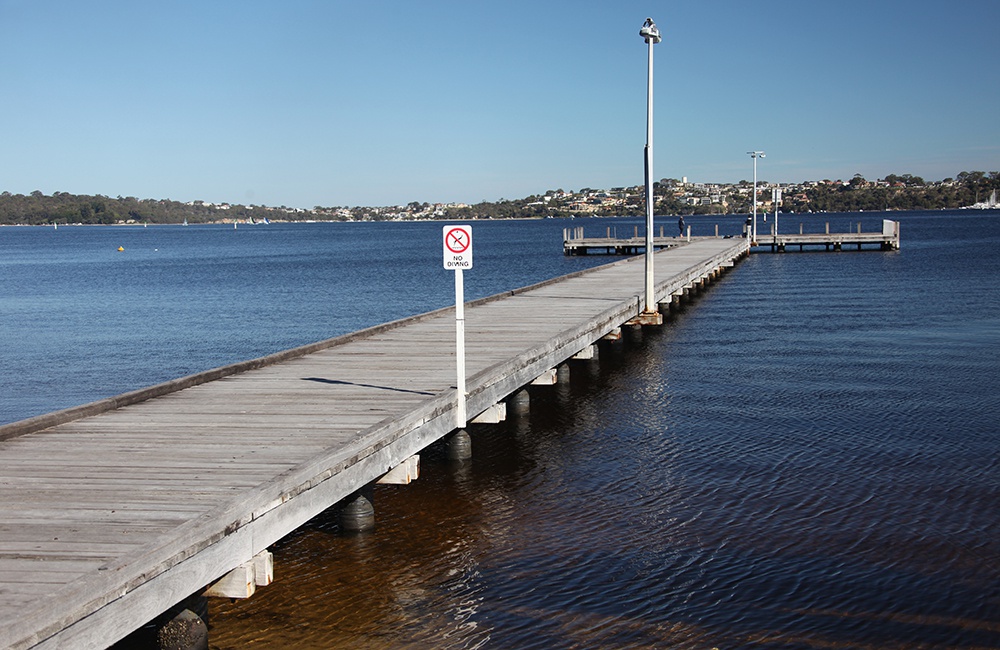
Jetty, set go!
Take a look at our Swan River Jetty profiles to find the best places to catch squid on the Swan.



